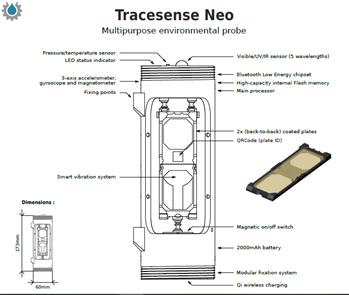China3D printingNet September 9th, French National Institute for Development (IRD) uses Formlabs’ stereolithography (SLA)3D printingTechnology has developed a water pollution sensor for use in the field.
IRD is a public multidisciplinary organization operating under the supervision of the Ministry of Higher Education, Research and Innovation and the Ministry of European and Foreign Affairs. It has participated in the environmental and geopolitical sustainable development of more than fifty countries.
The main goal of the project is to produce “low-cost” equipment for environmental monitoring.The team decided to use3D printingTechnology because they want to use commercially available tools to create a user-friendly sensor prototype. By using practical equipment, non-professionals in the field can test waters and collect pollution data, thereby creating a true national observation network.

Design of environmental probes. The picture comes from IRD.
Device design and structure
The team envisioned a device that could be used as an electronic probe encapsulated in a waterproof housing. The design scheme is selected to achieve the core goal of isolating pollutants in water (especially mercury). The purpose of this device is to facilitate sampling, making it possible to transition from an “expert” observation network to a participatory observation network. Effectively led to more local residents participating in the collection of scattered data from different waters.
“The electronic sensor system separates and concentrates the mercury in the water on a small plate, and then sends it to the analysis laboratory. The mechanical infrastructure protects these electronic components from water damage.” IRD team member, mercury cycle expert and researcher David Point said.
SLA or FDM 3D printingtechnology?
The team initially used Fused Deposition Modeling (FDM) in the process of building the mechanical infrastructure.However, it turns out that this is mainly due to water tightness and invalidity.


0 Comments for “French National Development Institute uses 3D printing technology to develop water pollution sensors”